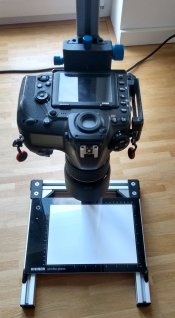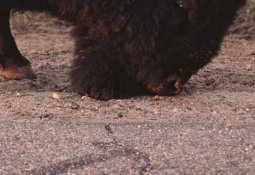Salt&Light
Member
So, I'm considering getting a scanner for my negatives. I had an Epson V600, but recently returned it because I realized how I wanted a more professional-grade scanner in the medium price range.
I'm currently looking at the Reflecta RPS 10M (~$1000), which only scans 35mm, the Epson V800 (~$800), and the Braun FS 120 (~$2000). I will be using Silverfast AI studio 8. I shoot both 35mm and 120 film. Let's go off the assumption that I'm not getting into darkroom printing anytime soon as well.
With the Reflecta, I sacrifice the ability to scan 120 film, but get about 24 megapixels in each scan since the effective optimal resolution is 4300 ppi.
With the Epson V800, I'll get about 6.7 megapixels for 35mm film and 22 megapixels for 120 film (effective optimal resolution: 2300 ppi)
With the Braun FS 120, I can scan both 35mm and 120 film, and I am able to get good megapixels for both 35mm and 120 film scans. 13 megapixels for 35mm film and 42 megapixels for 120 (pixel overkill). But, it's the scanner with the highest price point.
I got into medium format thinking that since the negatives are bigger, I can get more pixels/resolution in my photos and that will make me able to get larger prints. I've also been pleased with the sharp mamiya lenses.
If I decide against the Braun, would it be worth it to stop shooting medium format and only shoot with my 35mm SLRs in order to get 24 megapixels in a scan (reflecta) versus 22 megapixels in a scan of 120 (Epson V800)? It seems like if I get the Reflecta, I'll only shoot 35mm, and if I get the Epson V800, I'll only shoot 120 since the megapixels I'll get scanning 35mm negatives is poor. Is it still worth it to keep shooting medium format?
Would love to hear your thoughts. Thank you.
I'm currently looking at the Reflecta RPS 10M (~$1000), which only scans 35mm, the Epson V800 (~$800), and the Braun FS 120 (~$2000). I will be using Silverfast AI studio 8. I shoot both 35mm and 120 film. Let's go off the assumption that I'm not getting into darkroom printing anytime soon as well.
With the Reflecta, I sacrifice the ability to scan 120 film, but get about 24 megapixels in each scan since the effective optimal resolution is 4300 ppi.
With the Epson V800, I'll get about 6.7 megapixels for 35mm film and 22 megapixels for 120 film (effective optimal resolution: 2300 ppi)
With the Braun FS 120, I can scan both 35mm and 120 film, and I am able to get good megapixels for both 35mm and 120 film scans. 13 megapixels for 35mm film and 42 megapixels for 120 (pixel overkill). But, it's the scanner with the highest price point.
I got into medium format thinking that since the negatives are bigger, I can get more pixels/resolution in my photos and that will make me able to get larger prints. I've also been pleased with the sharp mamiya lenses.
If I decide against the Braun, would it be worth it to stop shooting medium format and only shoot with my 35mm SLRs in order to get 24 megapixels in a scan (reflecta) versus 22 megapixels in a scan of 120 (Epson V800)? It seems like if I get the Reflecta, I'll only shoot 35mm, and if I get the Epson V800, I'll only shoot 120 since the megapixels I'll get scanning 35mm negatives is poor. Is it still worth it to keep shooting medium format?
Would love to hear your thoughts. Thank you.












